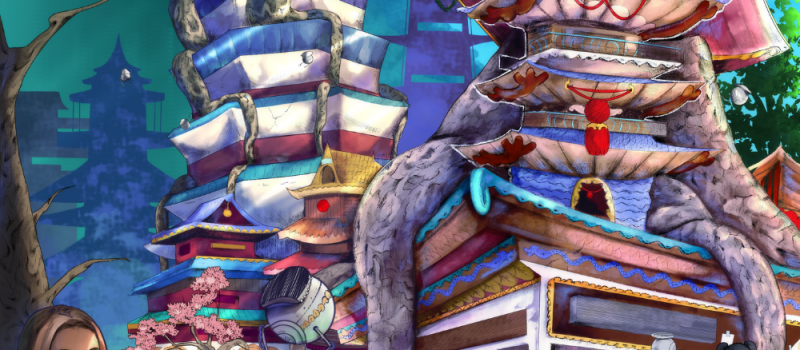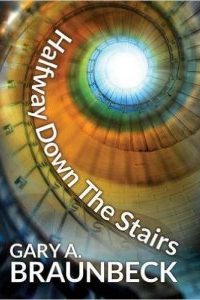Karen Burnham Reviews Short Fiction: Solarpunk, The Sunday Morning Transport, and Clarkesworld
Solarpunk Magazine 1-2/22, 3-4/22
The Sunday Morning Transport 3/6, 3/27, 4/3/22
Clarkesworld 4/22
I was sent the debut issue of Solarpunk Magazine, and I liked it so much I followed up with the second issue. While I tend to be skeptical of using “punk” as a suffix denoting various subgenres of speculative fiction, I’m more sympathetic to its use here. There’s so much news and so much of it is bad – on climate change, polarization, authoritarianism, racism, colonialism, etc., that it’s easy to fall into despair. Sometimes it feels like, if you’re not despairing, then you’re probably just naive. So maybe it takes a punk kind of attitude to look at the future and feel hopeful, as the stories in this magazine do. That’s not to say they aren’t cognizant of what’s in store – climate change is going to mess with the world, there’s no doubt about that. But as we adapt and build to move forward, either by curbing emissions or trying to survive the world when we don’t, maybe we can build a future that’s more inclusive, more healing, than what came before – both for ourselves and the planet.
To illustrate, my two favorite stories from the first issue are “The Brave Dress” by Starhawk and “Doomsday Derby” by Micah Epstein. In “The Brave Dress”, Lemma is getting set for hir coming-of-age ceremony, and hir parent Bou knows just what sh’he wants hir to wear. Bou is a critical resource in developing the nomadic restorative land management project that forms their community; sh’he is also a trans woman who was severely beaten when she tried to wear this particular dress to her prom in Texas. The dress means so much to hir, but Lemma has been making hir own outfit and doesn’t feel the same emotional resonance with it. In the end Lemma finds a way to incorporate it into the community ritual in a way that’s even more healing for everyone. I love how this story incorporates ecological management, generational trauma, and compassion to find a way forward that helps everyone – there’s no zero-sum game here. “Doomsday Derby” imagines using abandoned parking garages for a sport that’s described as a combination of roller derby, downhill, and parkour (now that’s something I’d love to see on ESPN). When this particular garage goes up for sale, likely to be demolished, the group holds an epic round of the derby, blocking off streets and inviting everyone to see. These folks are not going to passively let urban redevelopment happen to them; they are either going to fight for what they want, or at least go out in glory.
The second issue features two original stories and three contest winners. Of the originals, “Onyema’s Head” by Kasimma tells of Onyema, a bright and talented young man who is sent to college by his community. He’s a top student in chemical engineering, all set to go to work for Chevron. But when he comes back to thank everyone he starts behaving in very strange ways, baffling those around him. “Light into the Abyss” by Sarena Ulibarri centers on Mia, who works at a solar cafe (where food is cooked by the sun using reflectors). A group comes in on a cloudy day, and Mia recognizes them as a band she loves – only to see them get arrested shortly thereafter. It turns out they tripped across an eco-scandal when they went to film their latest music video. Mia organizes the community to get the word out and hold an impromptu concert. Maybe it won’t change the world, but in times like these every little bit helps.
I look forward to any new Yoon Ha Lee story, and “Nonstandard Candles” in The Sunday Morning Transport lives up to expectations. The narrator is an altered human who is an apprentice to a mapmaker. They go so far out into space that no light from any star can be seen. They start making paper “maps” of the emptiness, which causes the narrator to stew quite a bit. But they’re out there for a reason, and the conclusion has a blend of science and fantasy that is classic Lee. In “Ratatoskr” Kij Johnson introduces us to a Norse squirrel-god, as seen by Lila when she’s a six-year-old in Iowa. After seeing the towering figure in a storm cloud, she finds herself able to see and help squirrel ghosts. There’s a nod to Ray Bradbury early on in the story, and it has plenty of Bradbury-esque touches. The most surprising story is “Goodnight Room” by Julia Rios. It’s a surreal meditation on Margaret Wise Brown’s Goodnight Moon, which so many of us may have grown up with or read to our children. Rios imagines parallel she/he/sie bunnies in the room, trapped or maybe safe there after some catastrophe. The bowl of mush refills itself each day, and the telephone never rings. While the children’s book doesn’t have anything resembling a plot, Rios provides narrative momentum to, just maybe, have the bunny change their circumstance – something the bunny in Goodnight Moon hasn’t been able to do in over 70 years.
In the April issue of Clarkesworld, “An Expression of Silence” by Beth Goder is my favorite. It’s in the sub-genre of trying to find a way to communicate between humans and completely different kinds of entities. In this case Riley is an explorer on a new planet, and Yyfal is a single entity that has many different nodes. Riley definitely prefers trying to communicate with Yyfal over having to communicate with her crewmates, but there are fundamental disconnects that neither being seems to be able to overcome. Nonetheless, they are able to establish a long term relationship of sorts. Goder’s writing is lovely and the way the narrative is structured and switched between viewpoints keeps everything fresh and builds tension nicely. A completely different story of alien (mis)communication is found in Leonard Richardson’s “Two Spacesuits”. Carlos visits home because his mother is concerned that his father is acting strange (building a space mound in the backyard). His father’s also concerned about his mother’s odd new tic (growling sounds interspersed with speech). But neither of them recognizes anything odd in their own behavior. We get snapshots of a fully mature 30-year marriage, all the unspoken ways that Carlos can see they’ve adapted to live together, but now interrupted by something much stranger. The card game Uno plays a role in breaking through, and there are YouTube videos as well. This is a really neat story on several levels. One more story that continues the theme is “An Urge to Create Honey” by Martin Cahill. Out in space, Jonah was rescued from certain death by a bee-like hive species and transformed to be much more like them. He’s then sent back to his human settlement, which has been very hostile to the aliens due to lack of communication. The hope is that Jonah can act as a bridge, but of course his hybrid nature is upsetting to those he meets, even as it was upsetting to him at first. There are more transformations in store as the story continues. I liked the narration from the alien point of view, and appreciate how the story makes best use of human adaptability and flexibility.
Greg Egan contributes “Dream Factory”, in which people have started to implant bluetooth nodes in their pet cats’ brains. They can use apps to make the cats do cute things, which computer science student James and his co-conspirator Sarah find really creepy. They hack into the bluetooth software and produce an app that lets them visualize the cats’ dreams, hoping that will discourage people from messing with their brains. Even when the app goes viral it doesn’t have the desired effect, so they escalate their campaign further. The story might be a bit long for its premise, but it’s a great look at a modern day intersection of different technologies. In “Doc Luckless and the Stationmistress”, Thoraiya Dyer imagines Doc, stuck on a backwater planet and feeling like he’s paying penance for a massive medical tragedy in his past. The planet has been blockaded, with only outbound traffic allowed through the portal that enables people to come and go. The Stationmistress has sent her daughter away, hoping she can get a real education and maybe find a way to open the portal up to two-way traffic again. She and Doc have to decide how long to stick it out on a planet that’s being partly run by a faction of religious fanatics. Doc is motivated by the dreams he starts to have that seem to be from creatures on a different planet that he might be able to help. I would have liked the story to continue longer than it did; there seemed to be enough interesting setup that it could have supported a lot more plot. New author Parker Ragland has a lovely story in “The Carrion Droid, Zoe, and a Small Flame”. Set in the biodome that protects Denver from the post-climate-collapse world, Rob is a robot that cares for the recycling groves where trees are grown from well-cared-for corpses. Rob makes sure to treat everyone it cares for with respect, and Zoe Huang is drawn to befriend it. Zoe is a bit of a manic pixie dreamgirl, and Rob is often confused by her actions, but they’re able to establish a connection that is meaningful to them both.
Recommended Stories
“Doomsday Derby”, micah epstein (Solarpunk 1-2/22)
“An Expression of Silence”, Beth Goder (Clarkesworld 4/22)
“Nonstandard Candles”, Yoon Ha Lee (The Sunday Morning Transport 3/6/22)
“Two Spacesuits”, Leonard Richardson (Clarkesworld 4/22)
“Goodnight Room”, Julia Rios (The Sunday Morning Transport 4/3/22)
“The Brave Dress”, Starhawk (Solarpunk 1-2/22)
This review and more like it in the June 2022 issue of Locus.
 While you are here, please take a moment to support Locus with a one-time or recurring donation. We rely on reader donations to keep the magazine and site going, and would like to keep the site paywall free, but WE NEED YOUR FINANCIAL SUPPORT to continue quality coverage of the science fiction and fantasy field.
While you are here, please take a moment to support Locus with a one-time or recurring donation. We rely on reader donations to keep the magazine and site going, and would like to keep the site paywall free, but WE NEED YOUR FINANCIAL SUPPORT to continue quality coverage of the science fiction and fantasy field.
©Locus Magazine. Copyrighted material may not be republished without permission of LSFF.







